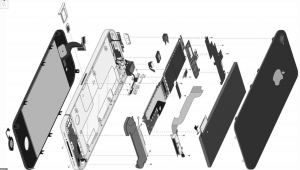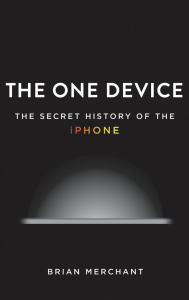
The invention that became the most profitable product in the world



Mobile phones were merely used for making calls on the go before Steve Jobs introduced us to “the One device” iPhone. How did the iPhone transform our world and turn Apple into the most valuable company ever?
This is a first hand look at how the cutting-edge tech that makes the world work- touch screens, motion trackers and even Artificial Intelligence – made its way into our pockets.
Apple have sold more than a billion iPhones since its launch in 2007. WE spend an average five hours a day staring at the little screens.
iPhone is more a collection of previous developments, brought together in a presentable package, “confluence Technology”. It is product of a long collaboration between designers and engineers, some working for Apple, and others more scattered across the worlds of scientific research and industrial design.
The Lithium batteries powering iPhones were developed by scientists working for Exxon during the 1970s oil crisis, as their work was abandoned when gas prices began sinking again. Wayne Westerman, a electrical engineer, who created the multi-touch system now used on every iPhone. But sadly he shut down his company, and discontinue the production of its popular ergonomic keyboards, when it was acquired by Apple. Gorilla glass was developed by a group of engineers at Corning Glass in the early 60s, who created it by tempering panes of glass in baths of potassium salts, but could not come up with a use for their super-strong glass until Apple came along.
There was so much secrecy that suppliers were given specs for dummy projects and engineers working behind locked metal doors. Apart of keyboard no component of the iPhone was user-tested. When engineers from other departments were brought in to debug some aspect of the phone they were not allowed to see screens. Steve Jobs called it “a revolutionary product”, one of those that comes along and “changes everything”. However, a software engineer who helped in the project points out that devices tend only to dazzle in their moment:” My wife is a oil painter. When she does something it’s there forever. Technology – in 20 years, who’s going to care about an iPhone?”.
The supply chain, included, Bolivian mines that provide the phone’s tin and silver extracted by Dickens 14,000 ft above sea level, the Chinese factory Foxconn in Shenzhen where the phones are assembled, Kenyan dumps where dead ones fetch up, the phones cobalt and tungsten come mostly from the Democratic Republic of Congo, where profits from mining have sustained the operations of violent rebel armies.
The One Device: The Secret History of iPhone by Brian Merchant, Bantam Press £20/ Little Brown $28.
